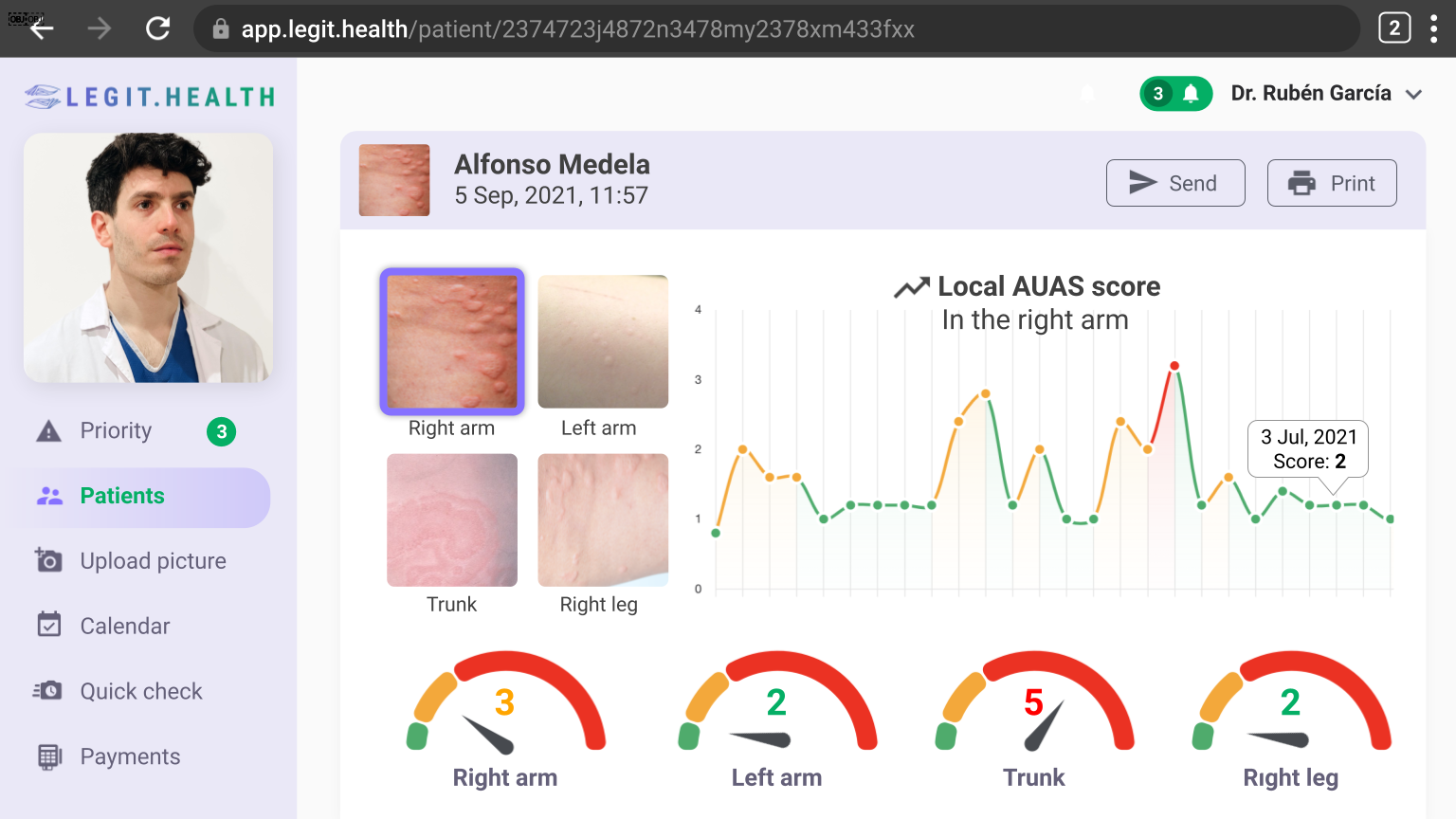How does the Urticaria Activity Score (UAS) work?
How does the UAS work?
The UAS is a questionnaire that must be filled in by patients daily. The UAS produces a numeric score ranging from 0 to 6, with higher values reflecting higher urticaria activity on that day.
However, doctors usually look at the weekly score, called the UAS7. The UAS7 is calculated as the sum of the daily scores. In other words: the UAS7 gives a score of the severity of the hives and the itch over 7 days.
The UAS7 produces a numeric score ranging from 0 to 42, with higher values reflecting higher urticaria activity. The reduction in the UAS score is the current benchmark for most clinical trials in urticaria and the criterion for efficacy of new chronic urticaria treatments approved by the FDA.
The international EAACI/GA2LEN/EDF/WAO guidelines for urticaria recommend the use of the UAS in clinical practice to determine disease activity and response to treatment.
How do you calculate the UAS score?
To measure the UAS score, you must look at two things: number of hives, and itchiness (also called 'pruritus').
The number of hives is the most objective parameter, as it is observable, whereas the itchiness can only be estimated and reported by the patient.
Hives (also called 'wheals')
The score for the number of hives does not reflect exactly the number of hives. The score is translated into three categories: less than 20 hives are considered mild, between 20 and 50 hives are considered moderate, and more than 50 hives are considered intense, according to the UAS score.
| Variable | Points |
|---|---|
| None | 0 |
| Mild (<20 wheals/24 h) | 1 |
| Moderate (21-50 wheals/24 h) | 2 |
| Intense (>50 wheals/24 h or large confluent areas of wheals) | 3 |
The fact that the number of hives is only on a scale from 0 to 3 is most likely because counting hives is a challenging and cumbersome task for a person. However, in 2019 a multidisciplinary team of scientists from several countries developed the Automatic Urticaria Activity Score, also called AUAS. The AUAS applies convolutional neural networks to count hives automatically with a high precision, just by looking at a photo of the patient.
Itchiness (also called 'pruritus')
Itchiness is estimated and reported by the patient, as there is no observable parameter that can quantify the intensity of the itchiness that a patient is experiencing.
| Variable | Points |
|---|---|
| None | 0 |
| Mild (present but not annoying or troublesome) | 1 |
| Moderate (troublesome but does not interfere with normal daily activity or sleep) | 2 |
| Intense (severe, interferes with normal daily activity or sleep) | 3 |
From Zuberbier 2014.
What is the UAS7 formula?
The formula that calculates the UAS7 is the following:
UAS7 = (Hday 1 + Iday 1) + (Hday 2 + Iday 2) + (Hday 3 + Iday 3) + (Hday 4 + Iday 4) + (Hday 5 + Iday 5) + (Hday 6 + Iday 6) + (Hday 7 + Iday 7)
Legend:
- H: Hives (wheals)
- I: Itchiness (pruritus)
What are the limitations of the UAS?
Several limitations of the UAS have been identified, and include the following:
- The UAS has been criticized for not correlating the clinical extent of the disease with quality of life and the psychological stress caused by urticaria.
- Improvements in UAS score are not linearly related to severity or improvements in urticaria.
- Most patients fall into a narrow band of scores, thereby decreasing the usefulness of the full range of scores (i.e., scores above 30 are rare). The validity of this scale may be overrated, in part because of the skew toward lower scores.
- Criterion validity is restricted by the lack of a gold standard measure of chronic urticaria severity.
What is the difference between a severe and a moderate UAS7 score?
The UAS7 produces a numeric score ranging from 0 to 42, with higher values reflecting higher urticaria activity, with higher values reflecting higher urticaria activity on that week.
A severe case of chronic urticaria will be more affected by itchiness and will have a larger number of hives.

We introduce AUAS, an automatic equivalent of UAS that deploys a deep learning lesion-detecting algorithm, called Legit.Health-UAS-HiveNet. Our results show that our algorithm assesses the severity of Chronic Urticaria cases with a performance comparable to that of expert physicians.